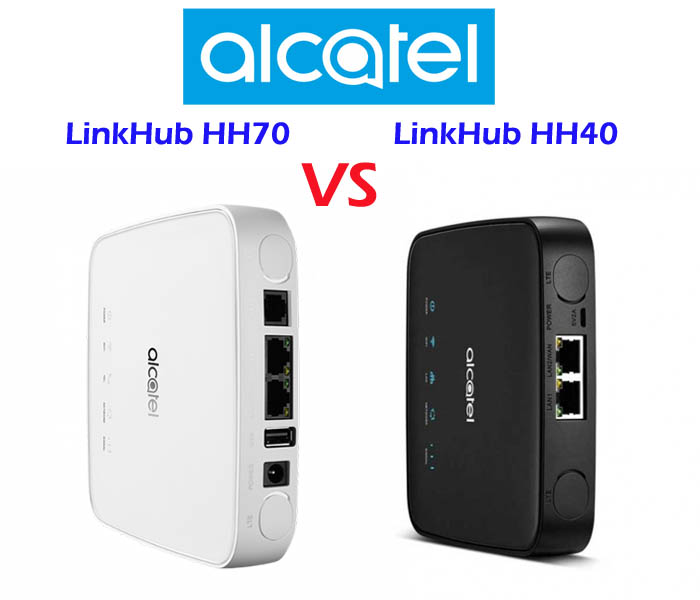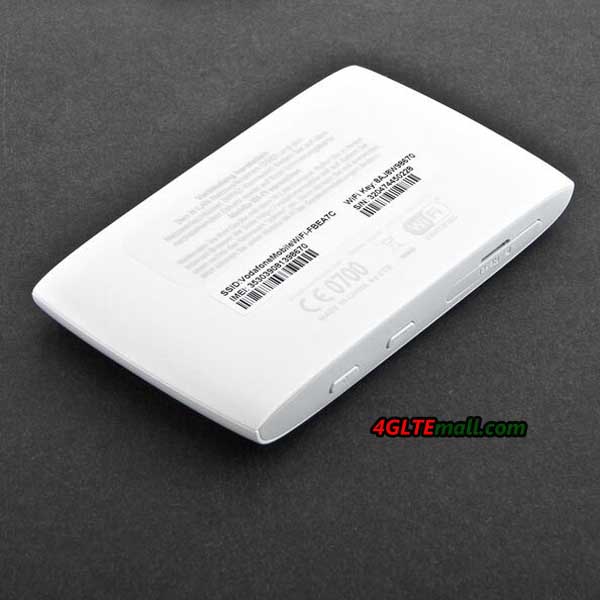LTE Router
-
[PR]
×
[PR]上記の広告は3ヶ月以上新規記事投稿のないブログに表示されています。新しい記事を書く事で広告が消えます。
-
Huawei Launches Wi-Fi AX3 Router With Gigahome and Wi-Fi 6+
A couple of days ago, Huawei unveils its WiFi AX3 series WiFi Router, which includes The new WiFi AX3 series includes two variant models: Huawei WiFi AX3 (Dual-core) and WiFi AX3 (Quad-core). The AX3 series router supports Wi-Fi 6 and demonstrates Huawei's cutting edge technology and 5G - with a prominent role in the development of Wi-Fi 6 standards. With its technology, Huawei has facilitated seamless collaboration between routers and other chip-level devices. It delivers powerful Wi-Fi 6+ connectivity when used with Huawei devices.
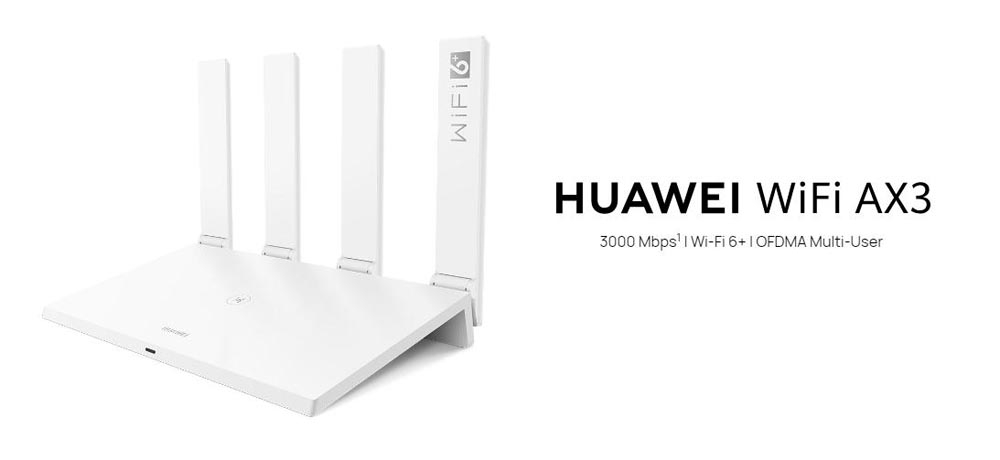
As the connecting hub for Huawei's revolutionary 1 + 8 + N all-scenario smart life strategy, the HUAWEI WiFi AX3 runs on the Huawei Harmony operating system, and features financial-level HUAWEI HomeSec TM security safeguards, providing users with an intuitive, lightning- fast, stable, and secure Wi-Fi 6 connection at all times.

HUAWEI Wi-Fi 6+: Breaking down barriers with dynamic narrow bandwidth
HUAWEI WiFi AX3 series routers come equipped with Huawei's exclusive Gigahome processor and Gigahome Wi-Fi 6 chipset. With the Wi-Fi 6 standards as the basis, Huawei has incorporated multi-chip collaborative technology, so as to ensure that the HUAWEI WiFi AX3 offers "Wi-Fi 6+" at a doubled network speed, alongside enhanced wall penetration capabilities, when used with other Huawei Wi-Fi 6 devices.
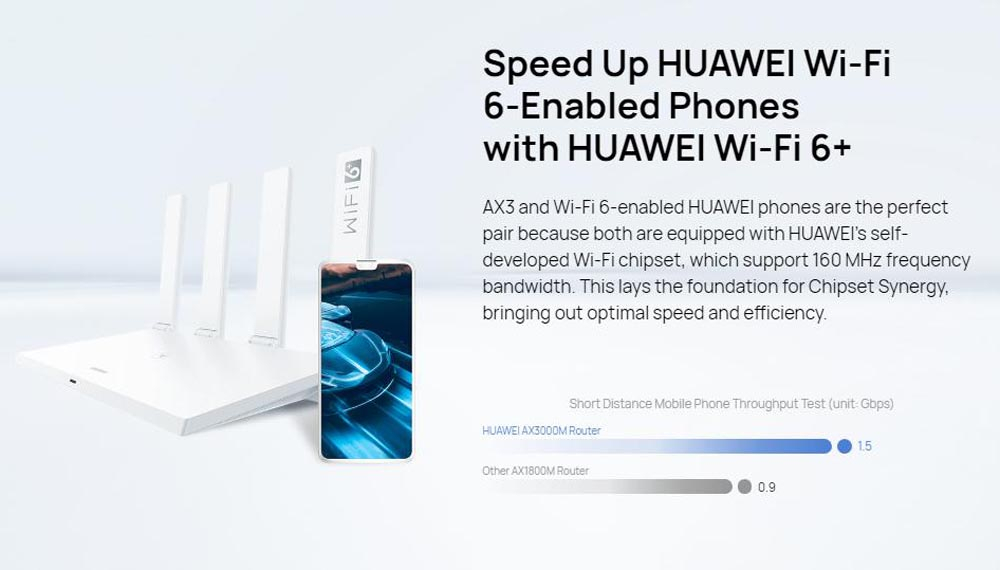
The Gigahome Wi-Fi 6 chipset made this solution possible, by improving the frequency bandwidth up to 160 MHz, as well as realizing on-demand automatic packet fragmentation in narrow-band mode via dynamic narrow-band technology. This has the effect of stabilizing the working brand frequency bandwidth at 2 MHz, for a wall-penetrating network signal that does not stall. Or simply put, users can enjoy faster network near the device, and more stable connections from further distances away.
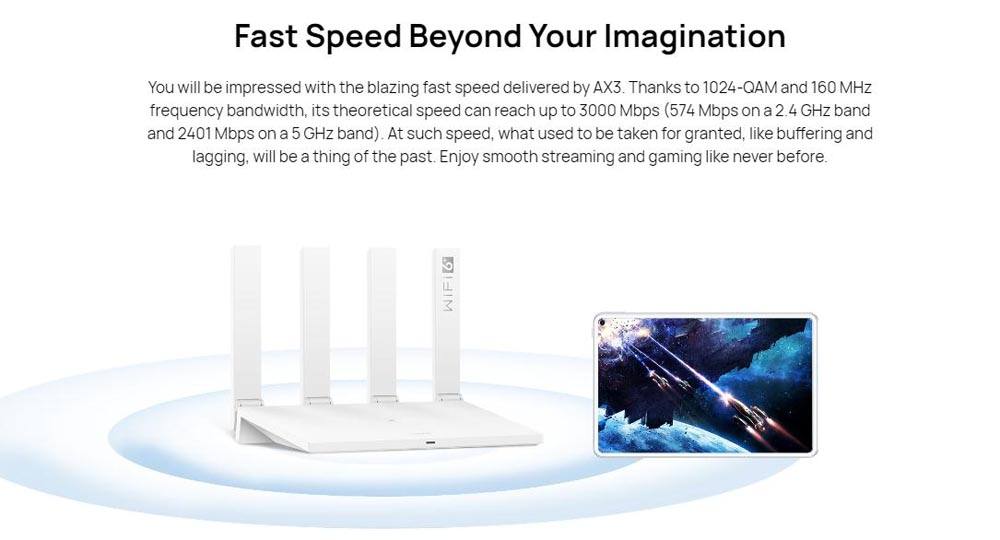
The quad-core version of the HUAWEI WiFi AX3 series also provides support for Huawei Share. Simply by tapping an unlocked Android phone with NFC enabled against the router's NFC detection area, users can connect directly to the Wi-Fi network without having to enter a password. This feature is particularly handy for catering to house guests, or hotel and restaurant patrons, saving them the time, hassle, and awkwardness associated with asking for and entering a complicated password. In addition to the exclusive dynamic narrow-band technology, the quad-core version packs four independent signal amplifiers (two for the dual-core version), enabling Mesh networking for multiple Huawei routers, and supporting wireless, wired, and hybrid wireless + wired networking modes that expand network access to every nook and cranny in a household or business.
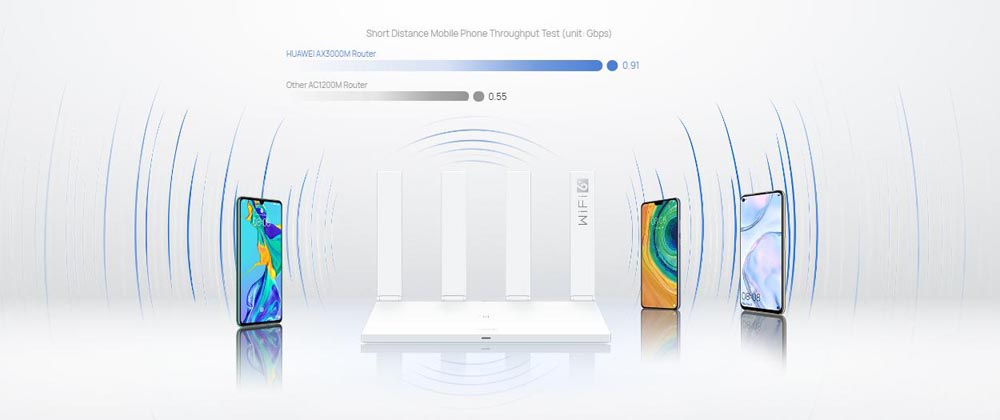
The HUAWEI WiFi AX3 Pro is the first home router to run on Huawei's proprietary Harmony operating system. Taking the factors that slow down wireless network speed into account, it optimizes the routing system from the app layer, driver layer, and kernel layer, and establishes a two-year aging test model to ensure its long-term stability. The HUAWEI WiFi AX3 quad-core version also incorporates HUAWEI HomeSec TM security protections. An independent security zone (TEE-trusted execution environment) has been built into the Gigahome quad-core chip, and the TrustZone security solution has been constructed from the microkernel for Harmony OS. This solution has obtained the Evaluation Assurance Level-5 (EAL5) certification from Common Criteria, a globally recognized IT product certification organization, further attesting to the product's financial-level security safeguards.
Huawei's commitment to eliminating network lag in the Wi-Fi 6 era
Because of its deep understanding of 5G technologies, Huawei has become a major contributor to the Wi-Fi 6 standard. Huawei experts have chaired five Wi-Fi standard working groups, for example, Dr. Osama Aboul-Magd, is the chairman of the Wi-Fi 6 (802.11ax) standard working group. Additionally, Huawei has submitted 240 new Wi-Fi 6 (802.11ax) proposals, accounting for 15% of all proposals, which is more than any other device manufacturer. Huawei has also introduced many advanced 5G technologies into Wi-Fi 6. Thanks to its long-term investment in Wi-Fi 6, Huawei not only offers products that support the Wi-Fi 6 standards, but also integrates unique chip collaboration technologies using its self-developed Gigahome Wi-Fi chips. This enables a range of Huawei Wi-Fi 6 devices to deliver an optimal user experience.
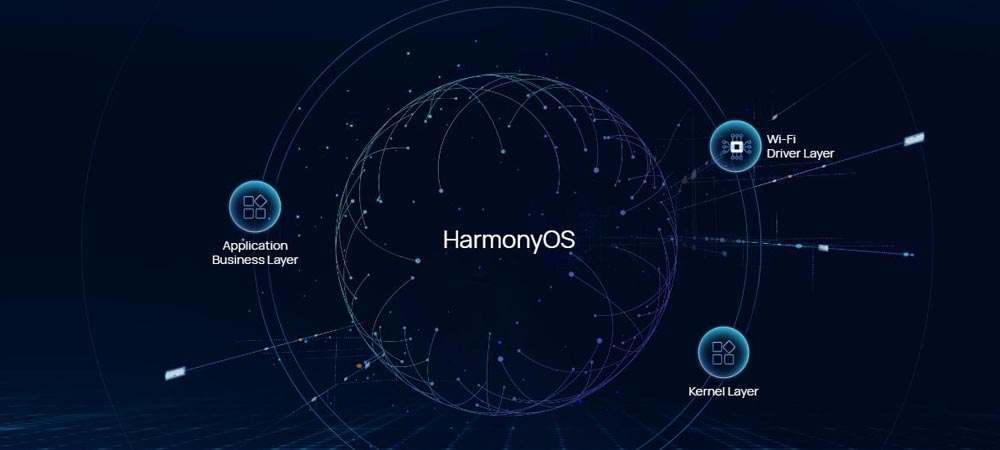
As well as being a leader in Wi-Fi 6 technology, Huawei is proposing a mid- to long-term strategy for building a seamless smart life for consumers in the next 5 to 10 years, based on the "1 + 8 + N" strategy which focuses on five major scenarios. In this strategy, Wi-Fi routers play a crucial role as connection centers, providing a simple, high-speed, stable, and secure Wi-Fi connection vital for enjoying a high-quality smart life, which is Huawei's long-term objective. Huawei has invested tens of millions of dollars in developing dedicated chips for routers.
Through the combination of software and hardware at the bottom layer of chips, Huawei has eliminated more than 80% of problems related to frame freezing, delays, and disconnections. In addition to the AX3 series, Huawei will continue to use the Gigahome chipsets on later products. Huawei has also built a Wi-Fi capability center in Wuhan which houses the most rigorous testing environment in the global router industry, meaning that Huawei products can be tested rigorously before becoming available to consumers.
Huawei WiFi AX3 Price and availability
Huawei WiFi AX3 will be available in the market at the end of July. However, Huawei didn’t leak about the price of the Huawei AX3 WiFi router. We will keep updating.PR -
Netgear Nighthawk M2 - Fastest LTE Router Test
Earlier this year, Netgear introduced the Nighthawk M2, a new mobile hotspot that transforms UMTS or LTE-based Internet access into a Wi-Fi hotspot to provide wireless network for multiple devices such as smartphones, tablets or laptops. The successor of the Nighthawk M1 supports LTE Cat. 20 and in theory allows data transfer rates of up to 2 Gbit/s downstream and 150 Mbit/s upstream.
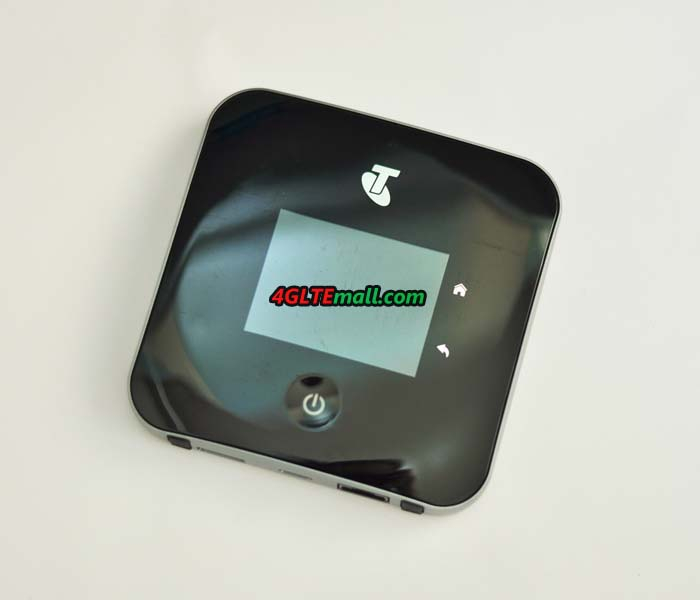
In practice, there are hardly any 4G networks supporting such high data transfer rates. Is still worth the purchase of the mobile hotspot, which is not a bargain with a purchase? We had the opportunity to put the heavy square device to a thorough test.
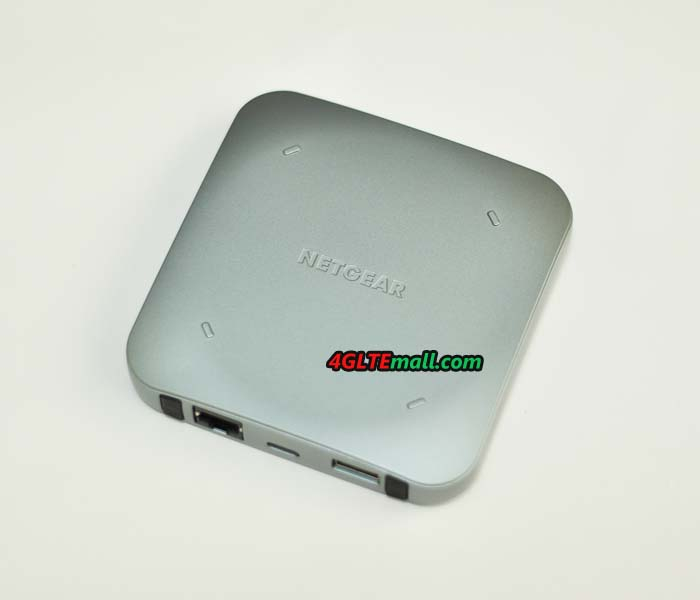
The Netgear Nighthawk M2 mobile router comes in a convenient package. In addition to the router itself, there is the battery and a quick start guide with the power supply and connecting cable. The supplied battery has a capacity of 5040 mAh. The WLAN standards 802.11a, b and g are supported. The 4G mobile hotspot is working on 2.4 and 5 GHz. The Netgear M2 has a USB-A and USB-C as well as an Ethernet interface. There are also connection options for external antennas (Buy Netgear Nighthawk M2 External Antenna). The LAN port can be used to use a wired Internet access instead of the mobile modem and to redistribute it via WLAN.

Good workmanship and shiny surface
The processing of the Netgear 4G mobile router is impeccable. You can argue about the shiny surface. Here you can see very clear fingerprints very quickly, especially since the Nighthawk M2 has a touch screen, so it regularly gets into the embarrassment of touching the display. The complete initial setup can also be made via the touch-sensitive screen. A separate app or the web-based access to the M2 pocket WiFi router menu is possible, but not mandatory.
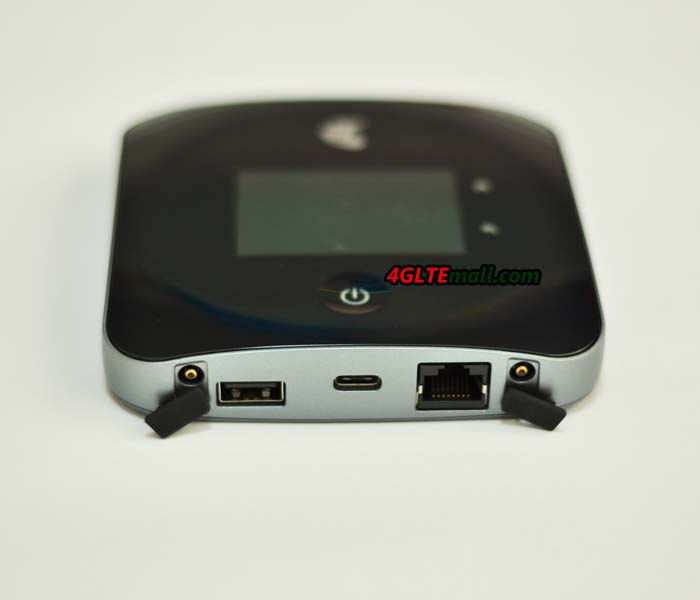
We have set up the router right on the touchscreen made, which was not easy. For one thing, the virtual keyboard is quite small due to the display size. So you always catch the wrong letter when typing. In addition, the screen does not respond as well to inputs as used by higher quality smartphones. If the setup of a network identifier (SSID) and the associated password worked quite well, then setting a (somewhat complicated) administrator password was not possible on the second attempt, so we skipped this step and later have made on the configuration via the Netgear Mobile App.
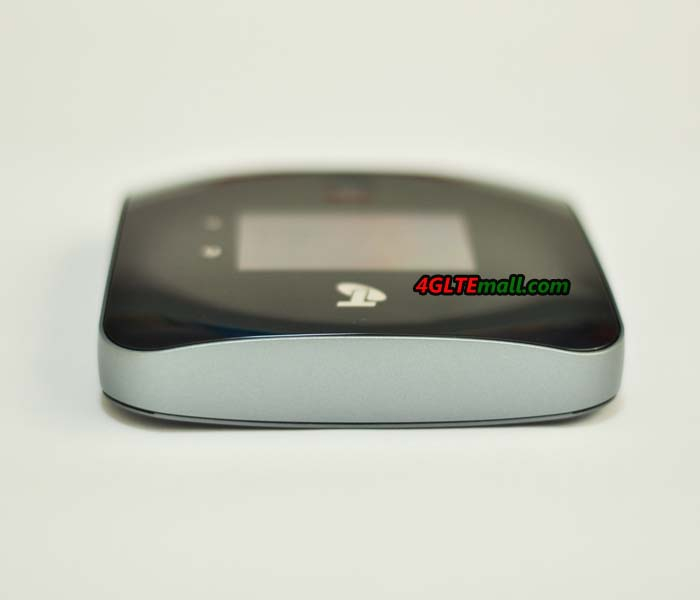
After the initial setup, the Netgear Nighthawk M2 mobile hotspot was immediately ready for use. The configuration for SIM cards is made automatically. As soon as the MiFi was set up, the availability of a firmware update was already displayed. We have installed this over the existing LTE data connection. In the process, around 160 MB of data was transferred. What changes the update brings is unknown. The internet connection via the Netgear Nighthawk M2 was very stable in the test for several hours. It did not matter if we used an Apple iPhone XS Max, a Samsung Galaxy S10+ or an Apple MacBook Pro.

The display of the router shows the current data consumption, the ID of the SIM card provider and the network technology used. There is also a small S-meter, which provides information about the quality of mobile reception. The battery level is also displayed. By default, you can also find the names of the Wi-Fi hotspot and the password via the touchscreen. This display can be deactivated if desired. Numerous settings are possible via the touchscreen menu. First, there is a WPS function. Then the user can limit the hotspot to one of the two WLAN frequency ranges (2.4 or 5 GHz). The connected devices can be displayed and, for example, you can specify whether the hotspot is put into standby mode after a period of non-use to save battery capacity.
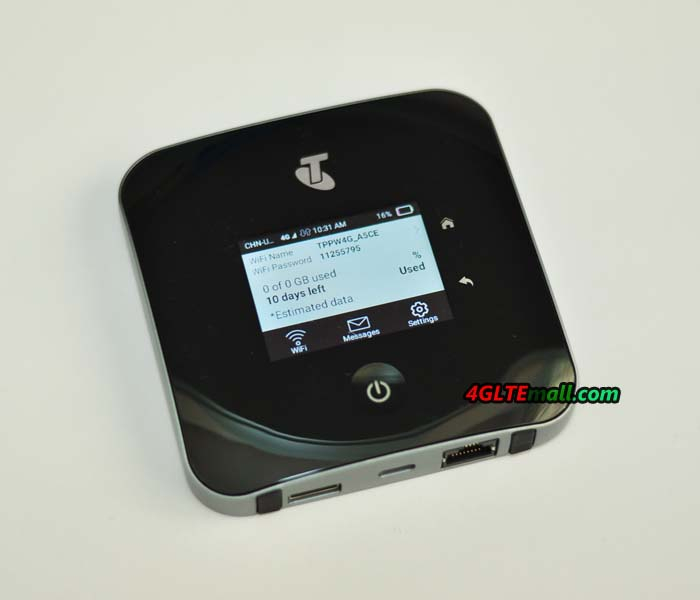
Other features
Other possibilities are the restriction of Wi-Fi hotspots to a smaller reception area in order to save battery capacity or the automatic WLAN detach when USB tethering is used. The brightness of the display can be adjusted and the user can decide whether he wants to use the Internet access only in the home network or in international roaming. SMS messages can be sent and received via the Netgear Nighthawk M2. As we have already mentioned regarding the initial setup: The touch screen does not always respond reliably to inputs and the virtual keyboard is quite small. Apart from that, the menu is functional and intuitive to use.
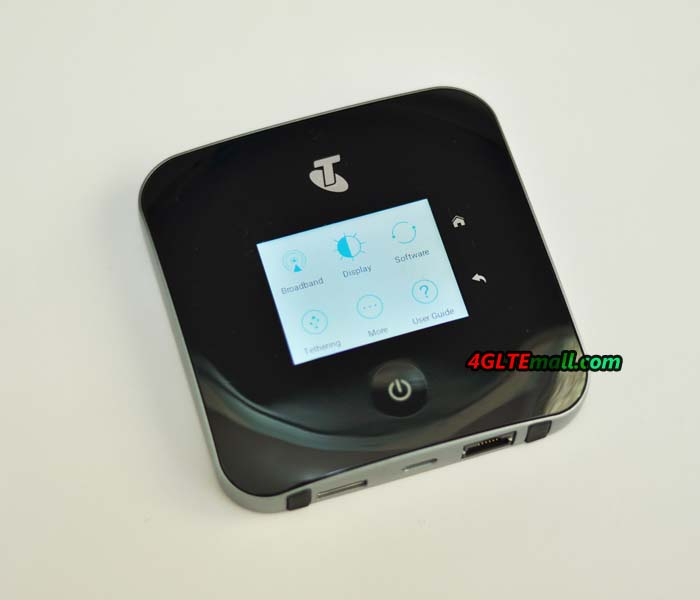
Good performance even in mobile operation
With a SIM card from Vodafone, we have achieved data transfer rates of up to 110 Mbps in the downstream and 61 Mbps in the upstream. This is far from the peak speeds that the Netgear Nighthawk M2 allows, but is more or less equivalent to what the mobile telecom Internet access does with the smartphone. Even in mobile mode, such as a Wi-Fi hotspot in the car, the router performed well in the test. At speed 120Mbps on the highway, the performance of Internet access was still fine. Compared to a WLAN adapter such as the Huawei E8377 CarFi, the Netgear device earns more scores by the possibility to connect an outdoor LTE antenna. In regions with bad LTE coverage, a magnetic base antenna on the car roof provides a significant improvement in reception, which also affects the performance of Internet access.
Conclusion: Good hotspot with slight weaknesses
Although Netgear Nighthawk M2 is well-made and provides stable Internet access for up to 20 devices, flaws such as the only moderately good touchscreen provides bad experience for users. For almost half of the purchase price, the Netgear Nighthawk M1 is available, which supports data transfer rates of up to 1 GBit/s via LTE, more than what the nets usually give out, so this model offers the much better price/performance ratio.
-
Alcatel LinkHub HH70 VS HH40
Many people know Alcatel 4G WiFi Hotspot, but few Alcatel 4G wireless router with Ethernet ports are well-known. Now Alcatel presented a new LinkHub series of wireless router for home use. The Alcatel LinkHub HH70 and HH40 are the two models for the home station. If you want to know the difference between LinkHub HH40 and HH70, you can check the specification table below for the comparison of the two 4G wireless wifi routers.
Model Alcatel LinkHub HH70 Alcatel LinkHub HH40 Product type 4G WiFi Router with Ethernet port 4G WiFi Router with Ethernet port Category LTE Cat.7 LTE Cat.4 Chipset Qualcomm MDM9240-1 Qualcomm MDM9207 LTE Data rates DL 300Mbps/UL 100Mbps DL 150Mbps/UL 50Mbps Supported 4G LTE frequency bands Band 1/3/7/8/20/38/B40 - EU Version(Alcatel HH40V): Band 1/3/7/8/20 - APAC/MEA Version(Alcatel HH40CM): Band 1/3/5(26)/7/8/20/28/38/40/41 WLAN 802.11a/b/g/n/ac, dual-band 2.4GHz & 5GHz 802.11b/g/n, 2.4GHz Max supported users 64 users 32 users MIMO 2 x 2 MIMO 2 x 2 MIMO Antenna Two, SMA-female jacks Two, SMA-female jacks Buy Antenna Alcatel LinkHub HH70 external antenna Alcatel LinkHub HH40 external antenna App management Alcatel WiFi Link App Alcatel WiFi Link App SIM Size Micro SIM Micro SIM Battery NO NO Dimensions 146 x 146 x 32 mm 134 x 134 x 31.5mm Interfaces * 2x 1000Mbps RJ45 port (WAN/LAN) * 1x RJ11 telephone port * Two external LTE antenna ports (SMA) * One Micro-SIM card slot * 1 x USB 2.0 port * 1 x LAN port(RJ45) * 1 x LAN/WAN port (RJ45) * Two external LTE antenna ports (SMA) * One micro-SIM card slot * 1 x Micro USB for power supply Datasheet LinkHub HH70 Datasheet(PDF) LinkHub HH40 Datasheet(PDF) User Manual LinkHub HH70 User Manual(PDF) LinkHub HH40 User Manual(PDF) Other features Firmware download Linkhub HH70 firmware Linkhub HH40 firmware Driver Linkhub HH70 driver Linkhub HH40 driver Reviews LinkHub HH70 Review LinkHub HH40 Review Price/USD 279.00USD 169.00USD Summary
From the specs table, we can see the main difference focus on below point:
Speed:
- Alcatel Linkhub HH70 supports LTE Cat7 and achieves download speed up to 300Mbps and upload speed to 100Mbps based on Qualcomm MDM9240-1
- Alcatel LinkHub HH40 supports LTE Cat4 and achieves download speed up to 150Mbps and upload speed to 50Mbps based on Qualcomm MDM9207
Variant models:
LinkHub HH70 has only one variant model now, but Alcatel Linkhub HH40 has two models for different markets: Alcatel HH40V for EU and Alcatel HH40CM for APAC/MEA areas.
Interfaces: Comparing with Linkhub HH40, Alcatel LinkHub HH70 has an extra USB 2.0 port for external disk connection and printer, but it doesn’t has the Micro USB port which is available in LinkHub HH40.
Dimensions: Alcatel LinkHub HH70 is a little bit larger than Linkhub HH40 The Alcatel Linkhub HH70 is advanced than HH40, so the Linkhub HH70 price is higher than HH40. If you would like to buy one home router from the two routers, we recommend the LinkHub HH70.
-
Alcatel LinkHub HH70 Cat7 LTE Router Review
At the IFA 2018, Alcatel presented a new LTE wireless router for the Linkhub series. The new LTE router model number is Linkhub Cat7 HH70. The Linkhub HH70 is very similar to the predecessor model Linkhub HH40 in appearance, which we had introduced before (check Alcatel Linkhub HH40 review). But there is much difference in the new HH70 linkhub.
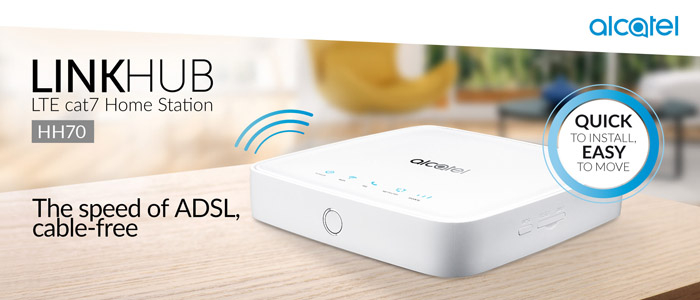
Alcatel Linkhub HH70 Appearance and interfaces
On the front, there is the Alcatel logo with five indicators for power, WiFi, telephone, network, and signal. The power button is on one edge side while the opposite side locates the power plug, one USB port, two Ethernet ports(one RJ45 for LAN/WAN and the other for LAN only), one RJ11 telephone port and two connectors for LTE antennas which are covered by two round cap. The antenna connector type is SMA-female. If you would like to buy the external LTE antenna for Alcatel Linkhub HH70, you’d better buy the external antenna with SMA-male connectors. The WPS button is at another side. The Reset button and SIM card are hidden under a cover. The SIM card slot is for NANO-SIM card size.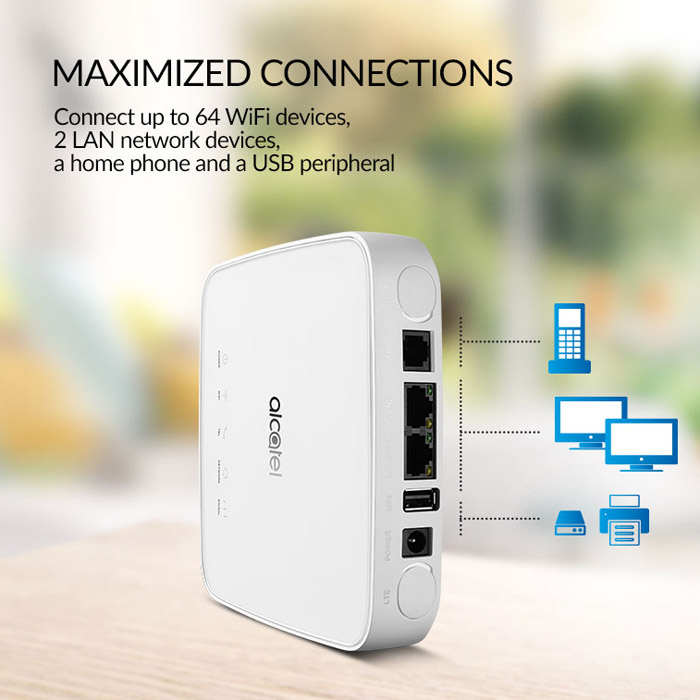
Alcatel Linkhub Cat7 HH70 Specifications
Upgrading from the Alcatel Linkhub HH40, Linkhub HH70 supports LTE cat7 which could achieve download speed up to 300Mbps and upload speed to 100Mbps based on Qualcomm MDM9240 chipset and 2CA carrier aggregation technology. And Linkhub Cat7 HH70 supports maximum WiFi users up to 64 devices while the HH40 supports only half to 32 devices. Alcatel HH70 Linkhub provides WiFi 802.11 a/b/g/n/ac on dual-band while the HH40 missing the 802.11 ac and only on single band 2.4GHz. The WiFi could cover around 250 meters, which is very strong.Like other Alcatel 4G router, Linkhub HH70 supports 4G LTE frequency bands on FDD B1/3/7/8/20 & TDD B38/B40, and the 3G UMTS network(B1/B3/B8) & 2G GSM (850/900/1800/1900MHz) are backward compatible.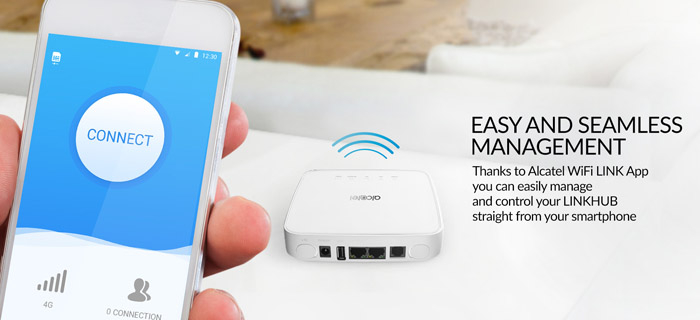 The management and control of the Linkhub HH70 could be done via the Alcatel WiFi Link APP, which could also be used with Alcatel Linkhub HH40. However, there is no integrated battery for mobile use in the Alcatel Linkhub HH70, but you can still operate the router via a corresponding power supply, for example, in the motorhome, in the car or in the house.
The management and control of the Linkhub HH70 could be done via the Alcatel WiFi Link APP, which could also be used with Alcatel Linkhub HH40. However, there is no integrated battery for mobile use in the Alcatel Linkhub HH70, but you can still operate the router via a corresponding power supply, for example, in the motorhome, in the car or in the house.
Alcatel Linkhub HH70 Availability and Price
Regarding the availability of Linkhub HH70, there is no more information to provide now. We will keep updating when we get the information about the availability and price in near future.
-
ZTE R218 4G Mobile WiFi Router Review
If you had known the ZTE MF920 4G MiFi router, you will know the ZTE R218 soon after we tell you the R218 comes from the ZTE MF920 with Vodafone customization. Vodafone introduced the MF920 to its product range and rename it as R218. The official name is Vodafone R218 Mobile WiFi and someone may also call it ZTE R218. Even though the ZTE R218 is newly presented by Vodafone the public, but the Vodafone R218 specs is not latest new comparing with other ZTE 4G LTE hotspots. Below you will see more details for the Vodafone R218 review.
 First, we list the details specs and feature for the ZTE R218 in a table:
First, we list the details specs and feature for the ZTE R218 in a table:
Features and Specs of the Vodafone R218 Manufacturer and model Vodafone R218 from ZTE Chipset Qualcomm MDM9207 LTE Category Cat.4 Download rate Up to 150 Mbps Upload rate Up to 50 Mbps Supported LTE bands 800 MHz, 900 MHz, 1800 MHz, 2600 MHz Backward compatible with HSDPA (42.2 Mbps), EDGE, GPRS Support for LTE-Advanced No MIMO Support No Connection for external antenna No Integrated telephone system No Network | LAN & WLAN LAN ports no WLAN standards 802.11 n (2.4 GHz) 5 GHz WLAN support No Encryption WEP, WPA, WPA2 WLAN hotspot function: Yes Others Battery pack 2,300 mAh Dimension 105 x 64 x 14 mm at 102 g USB 1x micro USB Memory card expansion No Release time 07/01/2018 Price 129.00USD available at: » www.4gltemall.com Document download Datasheet » Download Vodafone R218 datasheet User manual » Download Vodafone R218 manual Vodafone R218 – LTE Download Speed to 150MbpsThe Vodafone R218 was available in the summary of 2018 in Germany, but if you don’t like the customized one, you may turn to the original model ZTE MF920. Behind the Vodafone R218 branding, the model number ZTE MF920V could be seen. With a Micro SIM inserted, the Vodafone R218 could achieve download speed up to 150Mbps, which allows devices such as a smartphone, a notebook and a tablet to receive 4K movies simultaneously via Netflix. Those who want to share multimedia files with others can access a speed up to 50mbps for upload. The WiFi network itself transmits up to 300Mbps to connected devices. The removable battery is designed to provide up to 10 hours of internet access. Interestingly, the battery of Vodafone R218 comes from the competitor Huawei.The LCD display keeps the user up to date with the operating status such as battery level, received SMS, signal strength and the WiFi status. The ZTE MF920V could be configured via a web interface or APP for mobile devices. In the manual, there is QR code for smartphones to scan and download the APP. The Vodafone R218 is compatible with all mobile devices with Android or IoS OS. The 4G wireless mobile router does not offer many configuration options, but the firewall is integrated and WEP, WPA and WPA2 encryption standards are supported. The IP assignment is either static or dynamic. And the current data consumption and the number of sent and received SMS can be seen in the web interface at any time.SummaryAs we said, the Vodafone R218 (also ZTE MF920V) is not a high-end mobile WiFi hotspot. So it would be enough for daily use, but don’t expect too much from it if you want to surf at very fast speed through this mobile WiFi. Actually, ZTE also presents many LTE advanced mobile WiFi models to the public, such as ZTE MF971V, ZTE MF970, ZTE MF980 etc…If you want to get faster surfing speeds, you may check the higher-level LTE MiFis.

